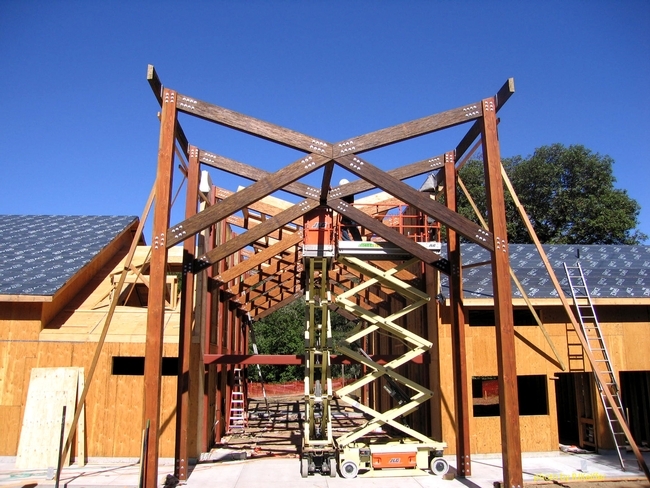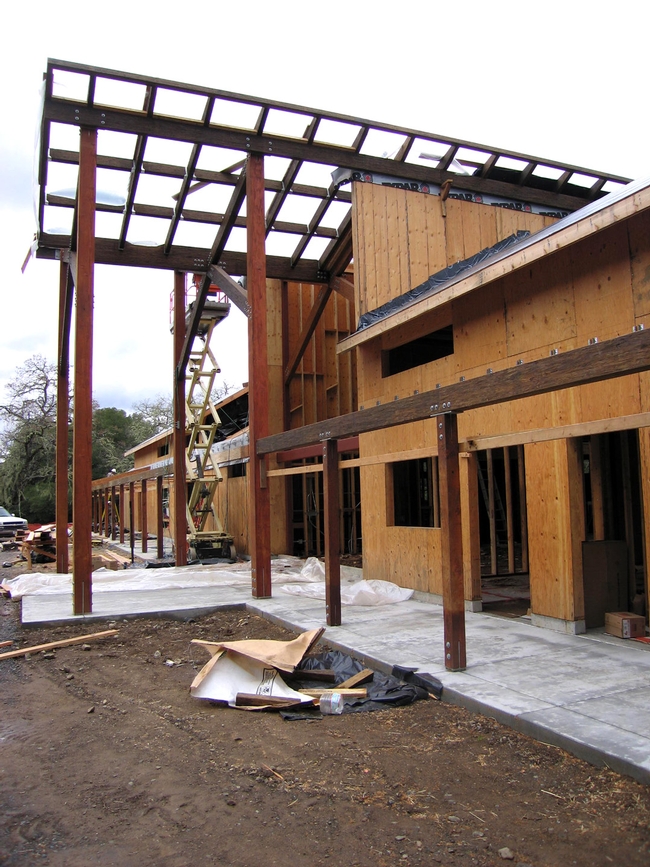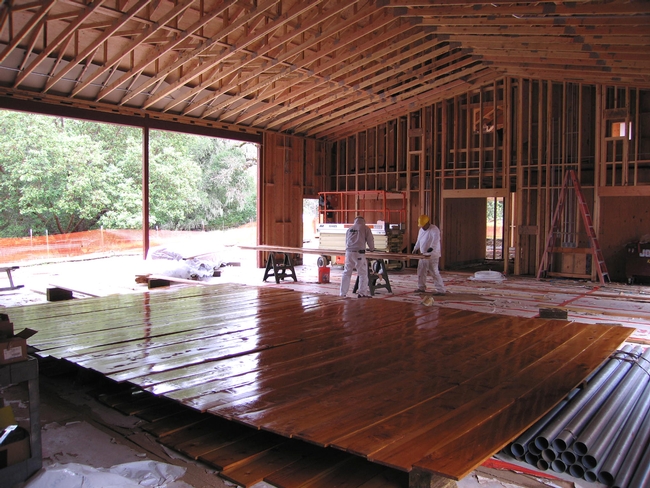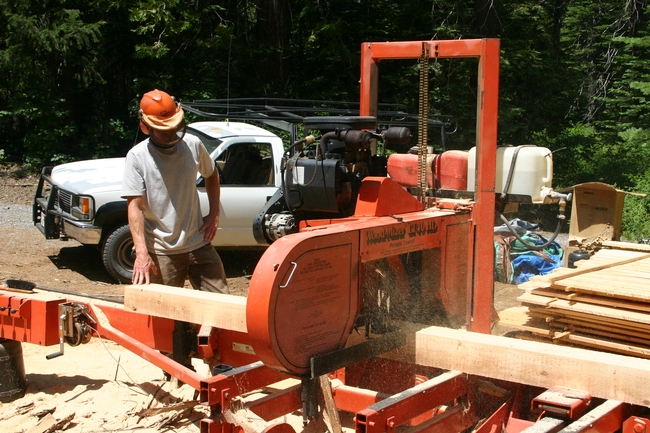Posts Tagged: ecosystems
UC, CSU team up on agricultural, environmental research projects
Leadership of California’s higher education systems made the funding available to jointly address issues in agriculture, natural resources and human sciences. Project criteria include collaborative research, teaching, or course development; development of student internship opportunities; and workshops, conferences, and symposia. Eight projects totaling more than $79,500 were selected from 30 proposals submitted.
“These research projects will help leverage limited resources to produce quick results on important issues in California,” said Neal Van Alfen, dean of the College of Agricultural and Environmental Sciences at UC Davis. “They are also building stronger connections among researchers throughout the state and providing hands-on learning opportunities for students.”
Researchers involved in this year’s projects are from UC Davis, UC Berkeley and California State University campuses at Chico, Fresno, Humboldt, Pomona, Sonoma, San Marcos and San Luis Obispo. The awarded projects, with principal investigators, are listed below:
- “Estimating residential water demand functions in urban California regions” — Economists from UC Berkeley and Cal Poly San Luis Obispo will estimate residential water demand of municipalities and water companies that serve 19 million people in the Bay Area and Southern California. (Maximilian Auffhammer, Stephen Hamilton)
- “Reintroduced mammals and plant invaders as key drivers of ecosystem processes in coastal and interior grasslands” — Researchers from Sonoma State University and UC Davis will study how reintroducing tule elk and reducing invasive Harding grass affects the availability of soil nutrients and the composition of plant communities. (Caroline Christian, J. Hall Cushman, Valerie Eviner)
- “Genetics of plant defense responses to pesticides and spider mites on grapes” — Scientists from UC Davis and Cal Poly San Luis Obispo will conduct laboratory, greenhouse and field studies to learn more about factors affecting grapevine response to spider mites, including cultivar resistance, drought impact and pesticide exposure. (Michael Costello, Richard Karban, Andrew Walker, Jeffrey Wong)
- “Defining the functions of polyphenol oxidase in walnut” — Through genetic analysis, researchers at CSU San Marcos and UC Davis seek to learn more about an enzyme involved in the postharvest browning of cut or bruised fruit. (Matthew Escobar, Monica Britton, Abhaya Dandekar)
- “Modeling the costs of hazardous fuel reduction thinning treatments and removal of woody biomass for energy” — Researchers from Humboldt State University, UC Davis, and the U.S. Forest Service will develop a model to estimate the costs of removing hazardous wildland fuels with different equipment and systems over a wide range of forest stand, site and road conditions. (Han-Sup Han, Bruce Hartsough)
- “Restoration of pollinator communities and pollination function in riparian habitats” — Researchers from California State University, Chico, and UC Davis will characterize native pollinator communities at restored riparian habitats within the Central Valley and test whether successful restoration of pollinator communities also leads to restoration of pollination. (Christopher Ivey, Neal Williams)
- “Estimating alfalfa’s impact on regional nitrogen budgets and nitrate leaching losses in the Central Valley of California” — Researchers from California State University, Fresno, and UC Davis will collect alfalfa and non-legume plants from irrigated fields and also identify San Joaquin Valley farm sites for a multi-year study of alfalfa’s impact on regional nitrogen budgets, groundwater nitrate leaching, and nitrogen requirements of rotation crops. (Bruce Roberts, Stuart Pettygrove, Daniel Putnam)
- “Community and ecosystem response to elevated nitrogen in managed grassland ecosystems” — Restoration ecologists from Cal Poly Pomona and UC Berkeley will investigate how elevated nitrogen levels affect competition among native and exotic plant species with regard to fuel characteristics at UC’s South Coast Research and Extension Center. (Erin Questad, Katharine Suding)
Reports on project outcomes are expected in December 2012.
New Hopland building integrates nature with function
Woodpecker-friendly siding harvested from a UC-managed forest and posts salvaged from a century-old mill are among the many “green” features at a new University of California facility currently under construction in Mendocino County.
The new Rod Shippey Educational Facility and Field Laboratory at the UC Hopland Research and Extension Center is currently under construction, scheduled for completion in June. The facility is being constructed to meet standards equivalent to Leadership in Energy and Environmental Design (LEED) certification, per University of California requirements of new buildings.
“We want this building to be educational itself,” said Bob Keiffer, superintendent of the UC Hopland Research and Extension Center. “We are trying every which way possible to incorporate ‘green aspects’ into this building.”
As early as October the building will welcome visitors to learn about natural resources, agriculture and science. It is expected to comfortably seat 180 to 200 people.
“We envision this building as being used by the entire community of the North Coast. There’s no other large meeting facility of this kind in Mendocino County that we know of and that will have this connection to the outdoors,” Keiffer said.
Community members are also contributing to the project. Six 27-foot tall reclaimed Douglas fir posts will greet visitors at the entry of the Rod Shippey Facility, a feature made possible in part to a donation by North Cal Wood Products, a Ukiah company that specializes in reclaimed and recycled wood. These posts, with 13 smaller timbers along the breezeway, have been reclaimed from the Pacific Lumber Company mill in Scotia, once the largest redwood mill ever constructed.
“We went out to the yard and saw them slice open the first timber,” said Shawn Tibor, director of facilities for UC Agriculture and Natural Resources. “With the timbers being 100 years old from another structure, we had to decide on-site where to position each post’s face. They have character, let’s put it that way. But all of them are standing now and have been stained.”
The Penofin wood stain was donated by another Ukiah company, Performance Coatings.
Woodpeckers welcome
“We have one of the densest populations of acorn woodpeckers anywhere in the state. The woodpeckers form granaries where they store acorns, sometimes in trees — and sometimes in buildings,” Keiffer said. “They can actually be quite destructive, with a series of half-inch holes all over the place.”
Impervious siding seemed like a requirement for the new building, until designers praised the weathered characteristics of historic barns on the property.
“We really tried to design this building so that it ties people to the natural world,” Keiffer said. “We want a very close relationship between the building and what’s outside—and the acorn woodpecker is a major part of that.”
So the building materials actually encourage woodpeckers to make use of the building. Cedar siding, soft enough to welcome woodpeckers, was sourced from UC Berkeley’s Blodgett Forest Research Station and fitted to a waterproof membrane that will help further protect the building.
First UC building with siding from a UC-managed forest
No other University of California building has sourced wood directly from the Blodgett Forest before, according to Robert York, research stations manager with the Center for Forestry at UC Berkeley.
The Blodgett Forest in the Sierra Nevada near Georgetown in El Dorado County, is harvested each year in the context of the station’s research, usually with contractors harvesting the trees and commercial sawmills purchasing the logs. Tracking wood from a single forest through a commercial mill would be difficult, so instead logs for the Hopland facility’s 7,500 board-feet of 1-inch siding went to the station’s own small sawmill, which is more commonly used for educational demonstrations.
“It was actually me out there doing most of the milling of the siding,” York said.
“I think it does represent the kind of collaboration that we can have between research sites in California,” York said. “We're all trying to improve ways of managing and understanding natural resources. Whether it's a forest or a grassland, we all have this objective that's shared between us.”
Efficiency within a narrow budget
Plans for the building have evolved when it comes to funding, efficiency and green design. The building was originally slated for $1.7 million capital funding in the state’s 2007 budget, which was later frozen until January 2010. Private donations, including an anonymous $750,000 pledge, have helped make the building a reality.
Budget restrictions have meant cutting back on some of the more innovative systems that could further lower heating costs, reduce water needs and improve the building’s overall eco-friendliness. Passive heating, cooling and indoor-comfort measures have been implemented in the meantime, and construction has moved forward keeping as many other options open as possible. For example, the building’s restrooms are plumbed with separate grey-water and black-water pipes, which would make plans for on-site black-water treatment more feasible in the future.
“We’re situated so that if next year we get funded for something more integrative or progressive, the possibilities remain,” Tibor said. “There’s no limit to great, innovative ideas; it’s the budget that drives things.”
Get construction update and more details about green features at the facility's website http://ucanr.org/sites/Rod_Shippey_Facility.





